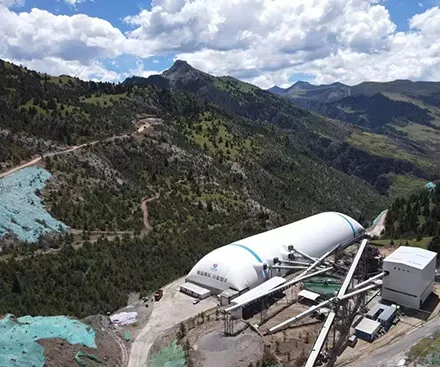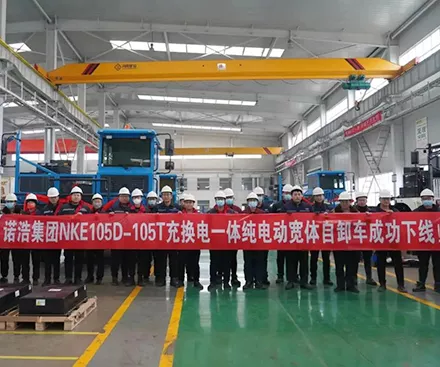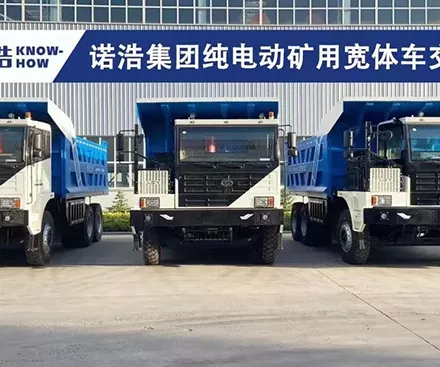Excavators are essential heavy construction equipment used for various tasks, such as digging, lifting, and moving large quantities of earth and materials. Two popular types of excavators are crawler excavators and wheeled excavators. Each type has its own set of advantages and disadvantages, making them suitable for different applications and working conditions. In this article, we will explore the comparison between crawler excavators and wheeled excavators to understand their respective strengths and weaknesses.
Crawler Excavator: Crawler excavators are equipped with tracks that allow them to navigate rough and uneven terrains easily. The tracks provide superior traction, making them highly suitable for working in muddy, sandy, or rocky environments. They can move efficiently on slopes and uneven ground, making them ideal for construction sites with challenging topography. The use of tracks, however, can slow down their movement on smooth surfaces, such as roads.
KNOWHOW Crawler Excavator Request a Quote
Wheeled Excavator: Wheeled excavators, as the name suggests, are mounted on wheels, offering higher travel speeds on paved surfaces like roads and highways. Their mobility is excellent on flat and stable terrains, making them more suitable for urban construction projects or jobs that require frequent relocation between sites. However, they may face limitations when working on rough or soft terrains due to reduced traction compared to crawler excavators.
Crawler Excavator: Crawler excavators are known for their versatility and adaptability to various tasks. They come with a wide range of attachments, such as buckets, hydraulic breakers, grapples, and augers, making them capable of handling different construction and excavation jobs. Additionally, their stability and ability to rotate 360 degrees make them well-suited for precision work in confined spaces.
Wheeled Excavator: While wheeled excavators are also versatile, their attachment options might be slightly limited compared to crawler excavators. The wheels themselves restrict some attachments that require greater stability, but they can still perform various tasks, such as digging, loading, and lifting.
Crawler Excavator: Crawler excavators have a larger footprint due to their tracks, which helps distribute their weight over a larger area. This results in lower ground pressure, making them less likely to sink in soft or muddy ground. It allows them to work efficiently in adverse weather conditions without getting stuck.
Wheeled Excavator: Wheeled excavators have a higher ground pressure compared to crawler excavators because their weight is concentrated on the wheels, which means they are more likely to sink into soft ground or encounter difficulties in challenging terrains. However, they perform well on firm surfaces and urban areas.
NWM560F Diesel Crawler Hydraulic Excavator Request a Quote
Crawler Excavator: The tracks on crawler excavators provide excellent stability, allowing them to handle heavy loads and operate on uneven ground without tipping over easily. This stability is essential for safe operation in rugged or hilly environments.
Wheeled Excavator: Wheeled excavators may have slightly lower stability compared to crawler excavators, especially on rough or uneven terrains. However, modern wheeled excavators are designed with advanced stabilization systems to mitigate potential tipping risks.
Crawler Excavator: Crawler excavators are not as easily transportable as wheeled excavators. They often require additional equipment, such as flatbed trailers or low loaders, to transport them between job sites. This transportation process can be time-consuming and add to the overall operational costs.
Wheeled Excavator: Wheeled excavators are more convenient to transport because they can move under their own power on standard roads. This eliminates the need for additional transportation equipment, reducing transportation costs and time.
Crawler Excavator: Crawler excavators tend to consume more fuel than wheeled excavators due to the friction generated by their tracks. In certain conditions, such as on smooth surfaces, they might be less fuel-efficient.
Wheeled Excavator: Wheeled excavators generally have better fuel efficiency compared to crawler excavators. Their ability to travel on roads with lower friction reduces fuel consumption during transportation between job sites.
Crawler Excavator: The undercarriage of diesel crawler excavators, which includes the tracks and related components, requires regular maintenance due to the wear and tear they experience during operation. This maintenance can be more involved and costly than that of wheeled excavators.
Wheeled Excavator: Wheeled excavators have a simpler design, and their maintenance is relatively straightforward compared to crawler excavators. However, the wheels and associated components may still require regular inspection and upkeep.
In conclusion, both crawler excavators and wheeled excavators have their unique advantages and are suited for specific applications. Crawler excavators excel in rough terrains, offering superior stability and adaptability with a wide range of attachments. On the other hand, wheeled excavators are more mobile on flat surfaces, making them a preferred choice for urban projects and tasks that require frequent relocation. When selecting between the two types, it is crucial to consider the specific job requirements, terrain conditions, transportation needs, and fuel efficiency to make an informed decision. Whether it's a crawler excavator or a wheeled excavator, both machines play vital roles in the construction industry, contributing to the development of infrastructure and the built environment.
If you want to know more information about crawler excavator, please contact us. We will provide professional answers.

Jul. 23, 2022
View More
Jun. 15, 2022
View More
Jun. 01, 2022
View More